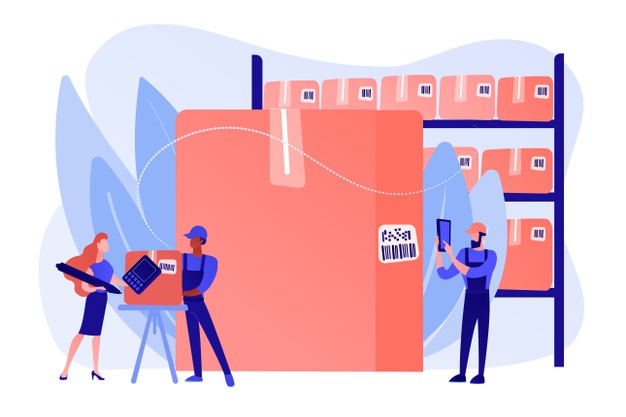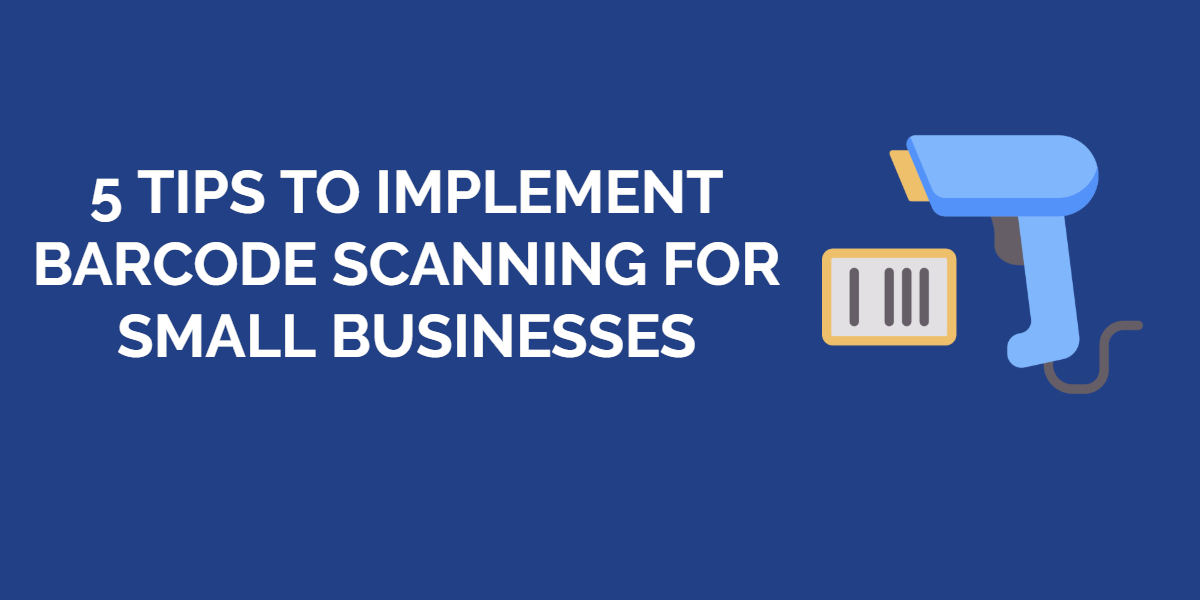Barcodes are one of the most widely used asset labels across the globe. With constant growth over the past years, the global 2D barcode reader market size is expected to reach $11.06 billion by 2028, growing at a rate of 6.7% from 2021 to 2028, according to a recent research report. Barcode labels have a diverse range of applications and are commonly used across a broad spectrum of industries by businesses of varying sizes, including small businesses.
With a steady drop in prices of barcode scanners and progress in mobile scanning capability, barcode technology has become increasingly affordable for smaller companies. Barcode Scanning offers many benefits to small businesses. It is simple to set up, requires minimal resources, and can significantly increase workflow efficiency. Integrated with a cloud management system, barcodes can improve security and help save time in recording daily inventory information.
If your small business fulfills these criteria, then you may want to consider investing in barcode scanning capability.
- A product-based business
- A large volume of inventory
- Multiple office locations
- Need to track multiple moving assets
- Dealing with external vendors

Step by step guide to implement barcode scanning for small business
A barcode tracking system not only enables you to streamline daily business tasks, it also helps eliminate human error and improves overall accuracy. In order to implement a successful barcode system, you need to define your goals and strategy and then invest in the right tools. Here is a step by step guideline to setting up a barcode solution for your business:
1. Define the purpose of barcode
Start by defining the purpose the barcode system is going to be used for. This will determine the type of barcode you will need. Typically, small businesses use barcodes for inventory and asset management. These can be further broken down into the following categories:
- Track and trace for supply chain management
- Stock and warehouse management
- Shipping and receiving orders
- Mobile barcode scanning
- Custody verification
Once you list down the business operations you will be using the barcode for, look for the relevant industry barcode standards. Getting the right type of barcode is critical for optimal results. For instance, do you need a 1D or 2D barcode system?
Linear or 1D barcodes like UPC are usually used for consumer goods that hold just a few dozen characters and get longer physically as more data is included. As an added advantage, 1D barcodes can be scanned within a range of 4-24 inches which is great if you have a large amount of inventories.
On the other hand, 2D barcodes like QR codes use patterns to encode their data. 2D barcodes can hold more data as compared to 1D barcodes while still appearing physically smaller. To diversity, 2D barcode labels include more than just alphanumeric information. You can even add images and other binary information for ease of access. Supporting a greater distance range, 2D barcodes can be scanned from about 2 feet away.
2. Create the barcode
The majority of barcodes can be used for personal point of sale systems. These barcodes will only pull up information in your business database. A personalized barcode system can be helpful for small businesses if they are just starting out on a small scale.
To successfully implement a tracking system, take care to select the barcode that would work best for you. As discussed above, there are different types of character limitations associated with various types of barcode that can impact how much information you can include. As a small business, invest time and effort in designing barcode labels as you don’t want something you will outgrow fast. Also, it is a good practice to create a standard barcode formula that can be used across the organization. After you have finalized the labels, document the formulas to help you keep track as you grow your business operations.
Read more: Barcode Equipment Tracking System: A Guide to Improving Efficiency

3. Pick the right hardware
Picking the right hardware is very important when it comes to implementing a barcode system for your small business. After you have finalized the barcode design, the next step is to print the label. For accurate results, the printed label should be clear and readable when pasted on the products.
Printers have different capabilities and price ranges and you can choose a printer for your small business depending on the barcode use case. Some popular choices for small firms include Zebra ZD410 and Honeywell E Class Mark III Desktop Barcode Printer.
Next, you need to choose a robust barcode scanner for your business. While making a decision, you should consider your budget, connectivity, design and type of the scanner. The three basic types of scanners include:
- Wireless: easy to carry, portable scanners that can transmit data instantly to a tracking software
- Fixed: Generally attached to your POS terminal and useful for mass scanning at a single point.
- Laser: Advanced than other types of scanners, the laser scanner is capable of exact reading and reducing false errors.
As a small business owner, cash flow is likely to be your main concern while choosing a scanner. However there are plenty of affordable options to choose from to help you progress to the next level.
4. Select a tracking software
When implementing a barcode system for a small business, selecting the right software is vital. A good option can be a tracking software that records information through barcode labels on assets and inventory. Automated barcode tracking improves business efficiency and limits chances of inaccurate information. It is important to find a software that not only fits within your budget but also has the capacity to cater to your needs.
Do your research to find one that fits into your workflows. You can use the software to customize label designs for your products in case your business needs to scale. The best software option for this purpose is the one that allows you to integrate with existing software modules for service maintenance and issue resolution. Before making the final decision, check whether you can have a trial version so see how it works out for your small business.
Read more: How to Make the Best Use of Your Barcode Management System

5. Implement barcode tracking procedures
After you have selected the correct software, define a management strategy.
To generate useful inventory data, establish Key Performance Indicators (KPIs) to track the performance of your barcode scanning system. Measurable metrics enable you to track whether barcode scanning is effective for your small business. You can track simple metrics like maximum warehouse efficiency, inventory count accuracy and order cycle time to check how barcodes are performing.
To ensure best barcode scanning performance, train your employees and teach them how to use the barcode system. In this way, everyone will be aware of how to use barcode equipment in the correct manner and carry out tasks efficiently.
About EZOfficeInventory
EZOfficeInventory is a leading asset tracking software. It allows you to track, maintain, and report on inventory from anywhere, at any time. We offer a free 15-day trial – no credit card required!








